Supporting Autistic Teens in Building Peer Relationships
Strategies and Support Systems for Enhancing Social Connections in Autistic Teens

Understanding the Challenge of Peer Relationships for Autistic Teens
Building peer relationships is a vital part of adolescent development and can be uniquely challenging for autistic teens. These challenges often stem from differences in social communication, anxiety linked to social interactions, and sometimes co-occurring profiles such as Pathological Demand Avoidance (PDA). Effective support requires a thoughtful approach tailored to individual needs, fostering social skills and confidence within comfortable and understanding environments. This article explores current strategies, therapies, and professional supports designed to aid autistic teens in forging meaningful peer connections.
Defining Pathological Demand Avoidance in the Autism Spectrum

What is Pathological Demand Avoidance (PDA)?
Pathological Demand Avoidance (PDA) is a profile within the autism spectrum characterized by extreme resistance and avoidance of everyday demands and expectations. Individuals with PDA often use strategies such as distraction, excuse-making, refusal, withdrawal, and even aggression to evade these demands. These behaviors usually arise from anxiety and a strong need to maintain control over their environment.
Origins and Recognition of PDA
The term PDA was first introduced in 1983 by Elizabeth Newson, who observed this distinctive pattern of demand avoidance behaviors. Although PDA shares many traits with autism, such as social communication differences and surface-level social skills, it is not formally recognized as a separate diagnostic category. Instead, organizations like The PDA Society and the National Autistic Society describe it as a profile within the broader autism spectrum.
How Does PDA Relate to Autism?
PDA overlaps with autism in several ways, including social challenges and obsessive behaviors focused on people or tasks. However, the defining characteristic of PDA is the pervasive avoidance of demands, which can significantly impact daily functioning. People with PDA may also engage in masking behaviors—using social strategies to hide anxiety or evade control. Recognizing PDA as part of the autism spectrum helps promote tailored support approaches that focus on trust, flexibility, and understanding the individual’s needs rather than relying on strict demands or routine.
Impact of PDA on Social Interactions and Peer Relationships
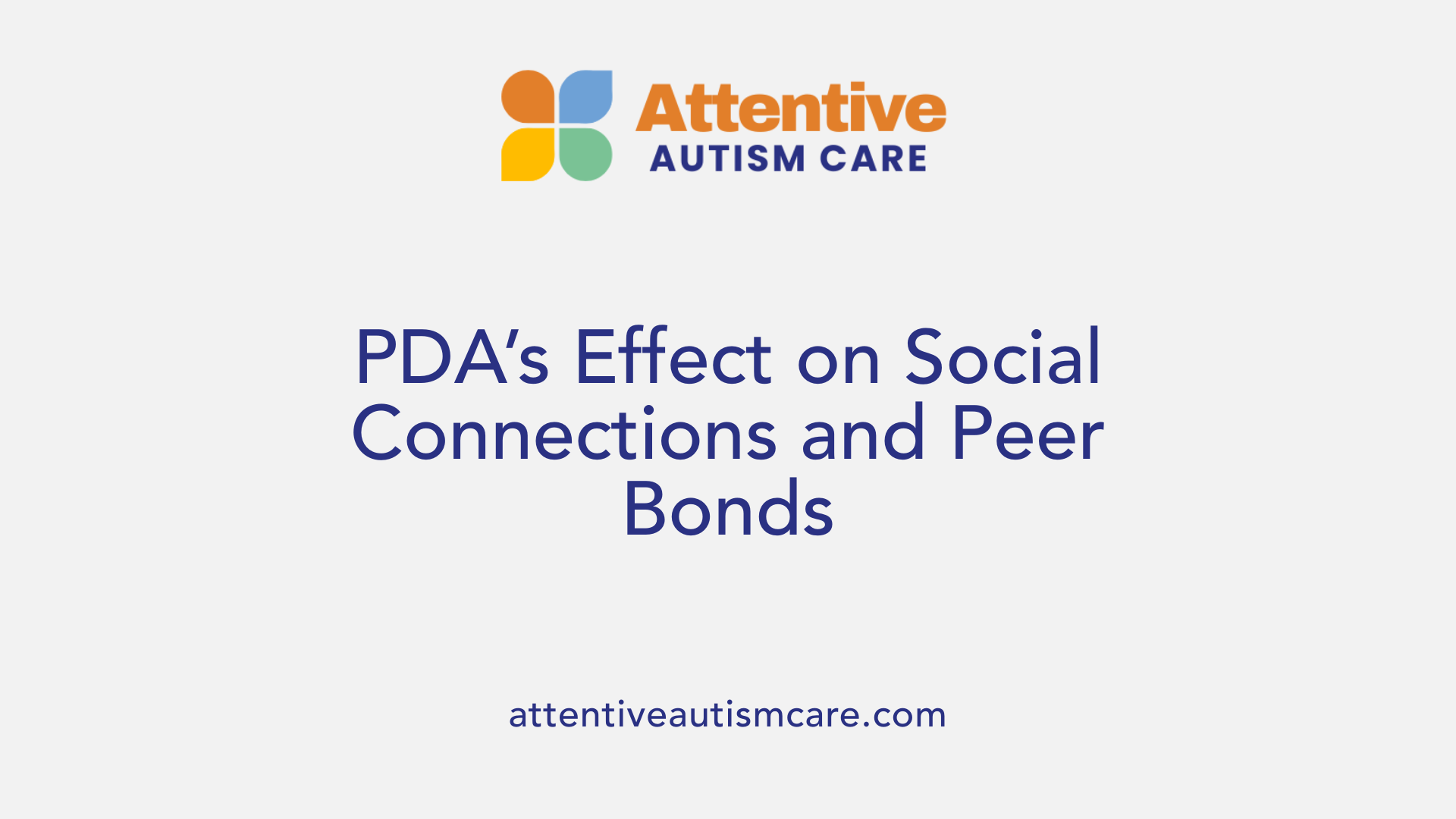
Social strategies in PDA
Individuals with Pathological Demand Avoidance (PDA) often employ nuanced social strategies to navigate their environment. One common approach is masking, which involves imitating typical social behaviors to avoid demands and reduce conflict. This surface-level social communication can help them manage immediate situations but can make authentic connections challenging.
Effects on social connections
The anxiety and emotional distress experienced by those with PDA, coupled with behaviors like refusal, distraction, and withdrawal, affect their ability to form and sustain friendships. These demand avoidance behaviors, driven by a need for control, may isolate individuals socially and contribute to difficulties in educational and occupational settings. Such challenges often result in barriers that hinder developing deep peer relationships.
Behavioral manifestations related to anxiety and control
Demand avoidance behaviors manifest as a range of responses including excuse giving, aggression, and withdrawal, often fueled by overwhelming anxiety. These actions reflect attempts to control situations perceived as demanding or stressful. Recognizing these manifestations as coping mechanisms rather than oppositional behaviors is essential for supportive interventions.
Supporting autistic individuals with PDA requires a compassionate understanding that these behaviors are not simply defiance but reactions to anxiety-provoking demands. Ensuring trust, avoiding direct demands, and providing flexible, calm responses can help create a safer social sphere where more genuine peer interactions and relationships can develop.
The Role of Applied Behavior Analysis (ABA) Therapy in Supporting Autistic Teens
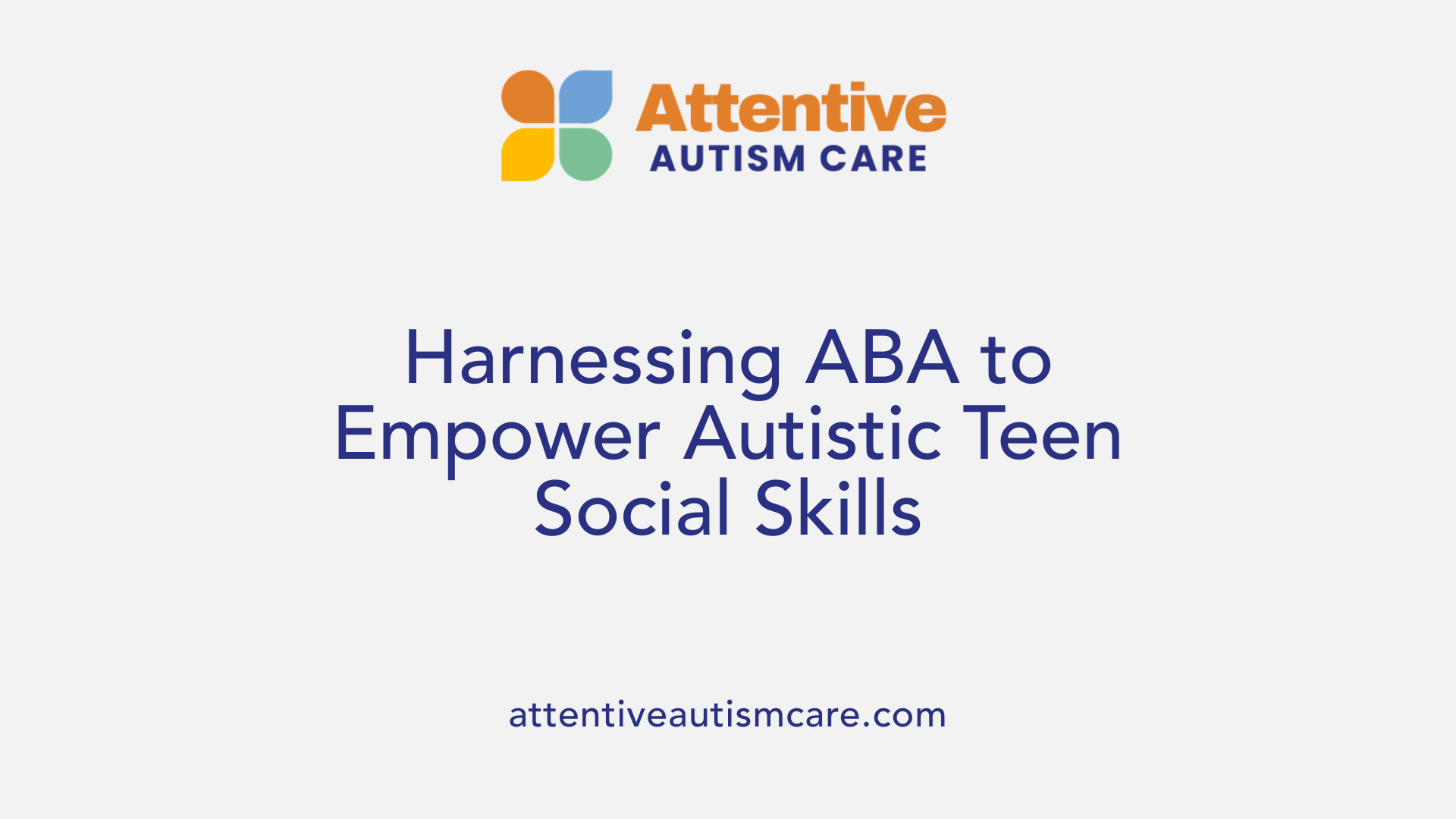
What is Applied Behavior Analysis (ABA) therapy?
Applied Behavior Analysis (ABA) is a scientific and evidence-based approach designed to understand and improve behaviors by examining environmental influences. It employs key techniques such as positive reinforcement—rewarding desired behaviors to encourage their repetition—and the ABC model (Antecedent, Behavior, Consequence) to analyze and guide behavior changes.
ABA therapy is highly individualized. Behavior analysts (BCBAs) assess each person’s unique skills, needs, and preferences to develop tailored programs. These programs target goals across communication, social skills, self-care, play, motor skills, and academics. ABA can be delivered across various settings including home, school, or community environments and can involve one-on-one or group sessions. Parental and caregiver training often accompanies therapy to support skill generalization in everyday life.
What are the overall benefits of ABA for autistic individuals?
Research supports that intensive, long-term ABA therapy (typically 25–40 hours weekly over 1–3 years) can lead to significant improvements in intellectual functioning, language development, social interaction, and daily living skills. By focusing on positive, enjoyable, and socially appropriate behaviors, ABA helps reduce problem behaviors that might hinder learning or social inclusion.
How strong is the evidence supporting ABA?
ABA's effectiveness is backed by extensive scientific research demonstrating meaningful gains in communication, attention, focus, memory, and academic achievement among autistic individuals. Its emphasis on data collection allows for continuous monitoring and adjustment, ensuring therapy stays aligned with the individual’s evolving needs.
In summary, ABA therapy provides a structured, compassionate framework to boost skills and reduce challenges for autistic teens, supporting their growth toward greater independence and social engagement.
How ABA Therapy Specifically Enhances Peer Relationships and Social Skills
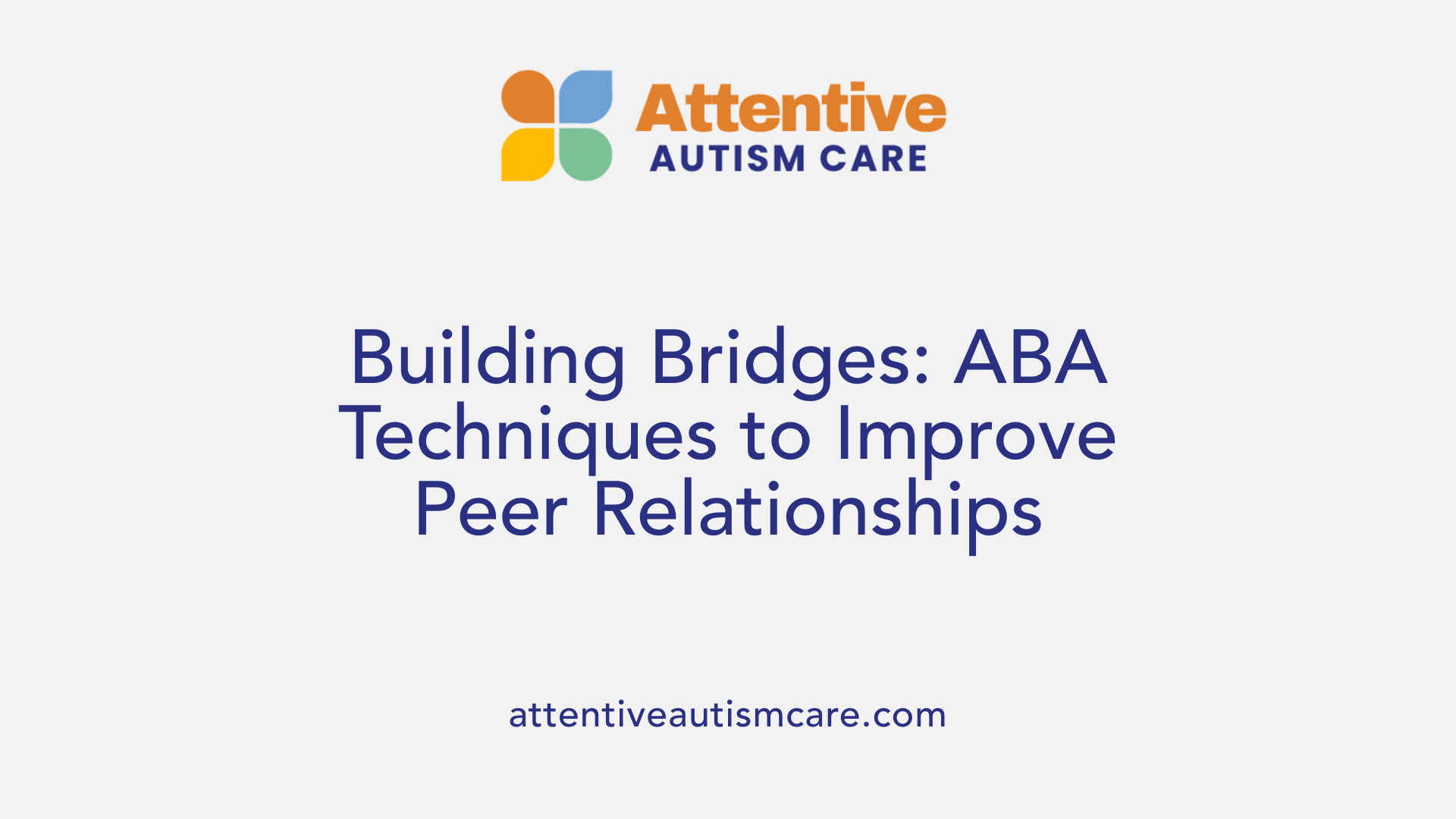
Skill Development Through Reinforcement
ABA therapy supports individuals with autism by promoting positive social behaviors using reinforcement techniques. Positive reinforcement involves rewarding desirable behaviors such as initiating conversations, sharing, and cooperative play, which encourages these behaviors to occur more frequently. Through this method, learners gradually build social skills that are critical for forming and maintaining peer relationships.
Personalization of ABA Programs
Behavior analysts (BCBAs) create personalized ABA programs tailored to each individual's unique needs, preferences, and skill levels. These programs focus on enhancing communication, social interaction, and self-care skills, which directly impact the ability to connect with peers. The therapy’s flexibility ensures that interventions address specific challenges faced by the individual, such as difficulty initiating social interactions or managing anxiety in group settings.
Settings and Delivery Formats
ABA therapy is adaptable and can be delivered in various settings including homes, schools, and community environments, allowing practice of social skills in real-life contexts. It can be provided one-on-one or in group formats, enabling individuals to interact with peers during sessions and practice social behaviors naturally. This varied approach supports generalization of learned skills across multiple environments, improving real-world social success.
By combining targeted skill development, individualized planning, and flexible delivery, ABA therapy effectively enhances peer relationships and social abilities, helping individuals with autism lead more connected and fulfilling lives.
Techniques Utilized in ABA to Foster Social Connection
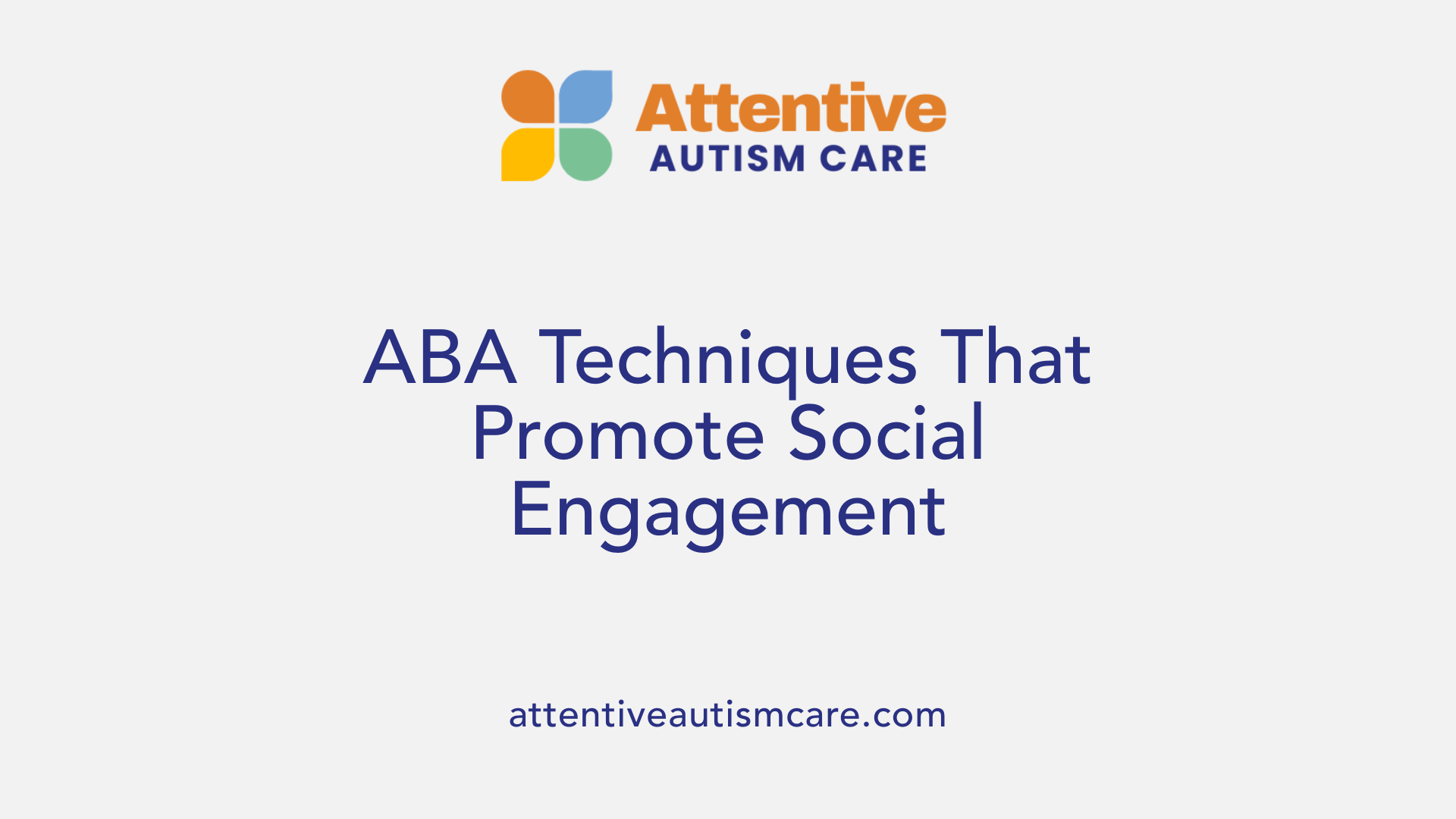
What Are Some Common Techniques Used in ABA Therapy?
Applied Behavior Analysis (ABA) employs several effective techniques aimed at enhancing social skills and overall behavioral development. One widely used method is positive reinforcement, which involves rewarding desired behaviors to increase their likelihood of recurring. Rewards are personalized based on individual preferences, making the reinforcement meaningful and motivating.
Another foundational technique is discrete trial training (DTT). This method breaks down complex skills into smaller, manageable steps. Each step is taught through repeated trials with immediate feedback, helping learners grasp new concepts systematically.
To promote independence, ABA utilizes prompting and fading. Initial prompts guide the learner to perform the desired behavior, but these prompts are gradually reduced over time, allowing the individual to take more control and master the skill independently.
Natural environment teaching (NET) integrates learning into everyday activities and settings, encouraging the generalization of skills. By working within familiar environments, learners can practice social and communication skills in real-life situations, enhancing their relevance and retention.
Other techniques include behavior chaining (linking small steps to form complex behaviors), task analysis, modeling, and redirection. These approaches are all data-driven and tailored to the individual's unique needs and abilities.
Overall, ABA therapy’s diverse strategies are designed to foster meaningful behavioral improvements, especially in communication and social interaction, which are vital for building connections and functioning effectively in daily life.
Customizing ABA Programs to the Needs of Autistic Teens
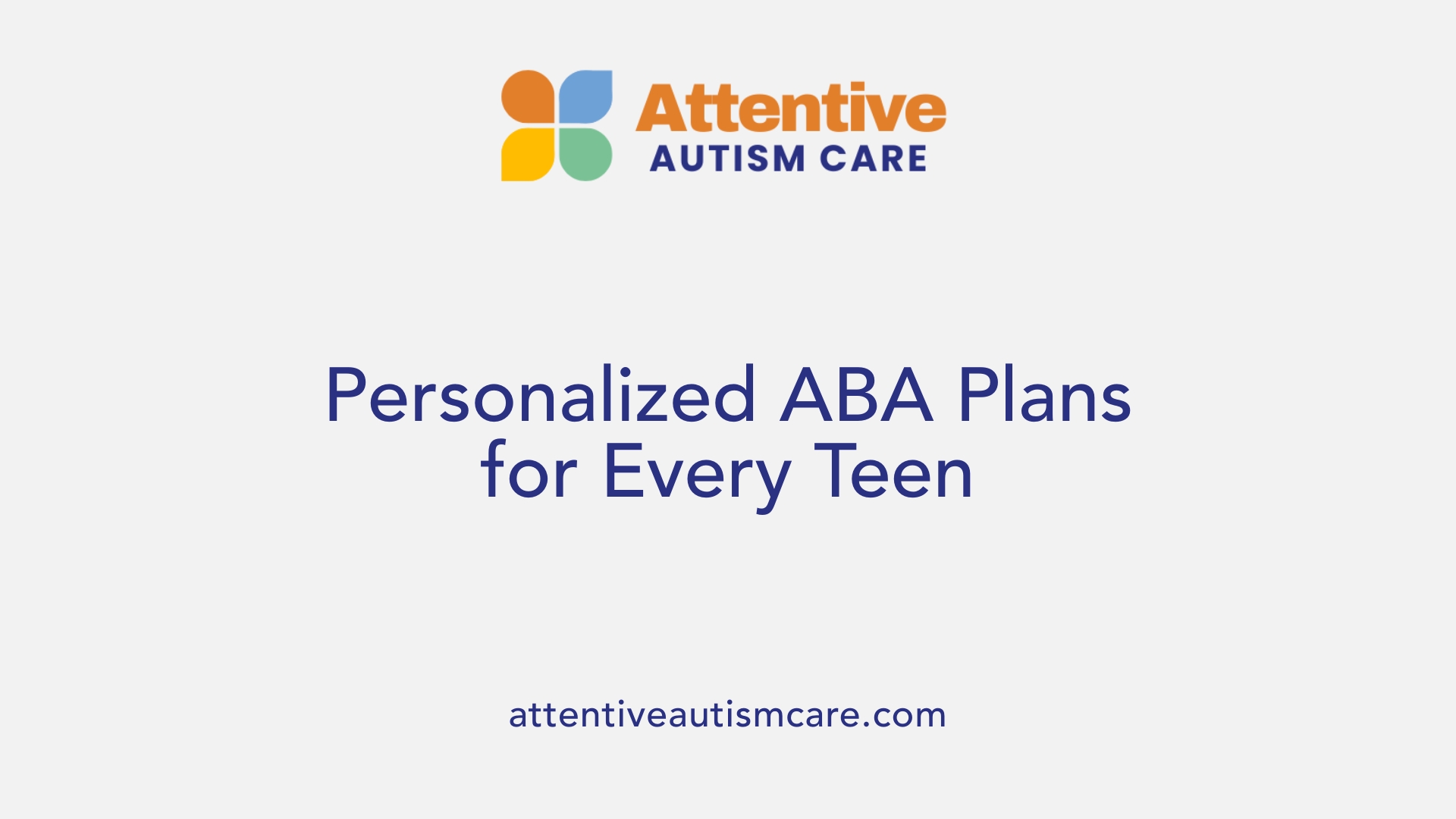
Assessment and Skill Profiling
Before beginning an ABA program, behavior analysts conduct detailed assessments to understand the unique skills, challenges, and preferences of the autistic teen. This comprehensive profiling helps identify areas like communication, social interaction, self-care, and academic abilities that need support. The assessment process ensures that interventions are personalized, respecting each teen's individuality and demand avoidance traits, such as those seen in PDA profiles.
Goal Setting
After assessment, tailored goals are established collaboratively with families and the teen. These goals focus on improving communication, social skills, play, motor abilities, and daily living tasks. By setting specific, measurable objectives, the ABA program can address functional skills that enhance independence and quality of life. The goals remain flexible to accommodate the teen’s response to therapy and changing needs.
Data Collection and Progress Monitoring
Ongoing data collection is integral to ABA, tracking the teen’s progress toward set goals. Behavior analysts use the ABC model—Antecedent, Behavior, Consequence—to understand behavior patterns and adjust interventions accordingly. This systematic monitoring enables continuous refinement of teaching strategies and ensures that supportive approaches remain positive, encouraging, and aligned with the teen’s personal growth and emotional well-being.
The Team Behind ABA: Professionals Driving Positive Change
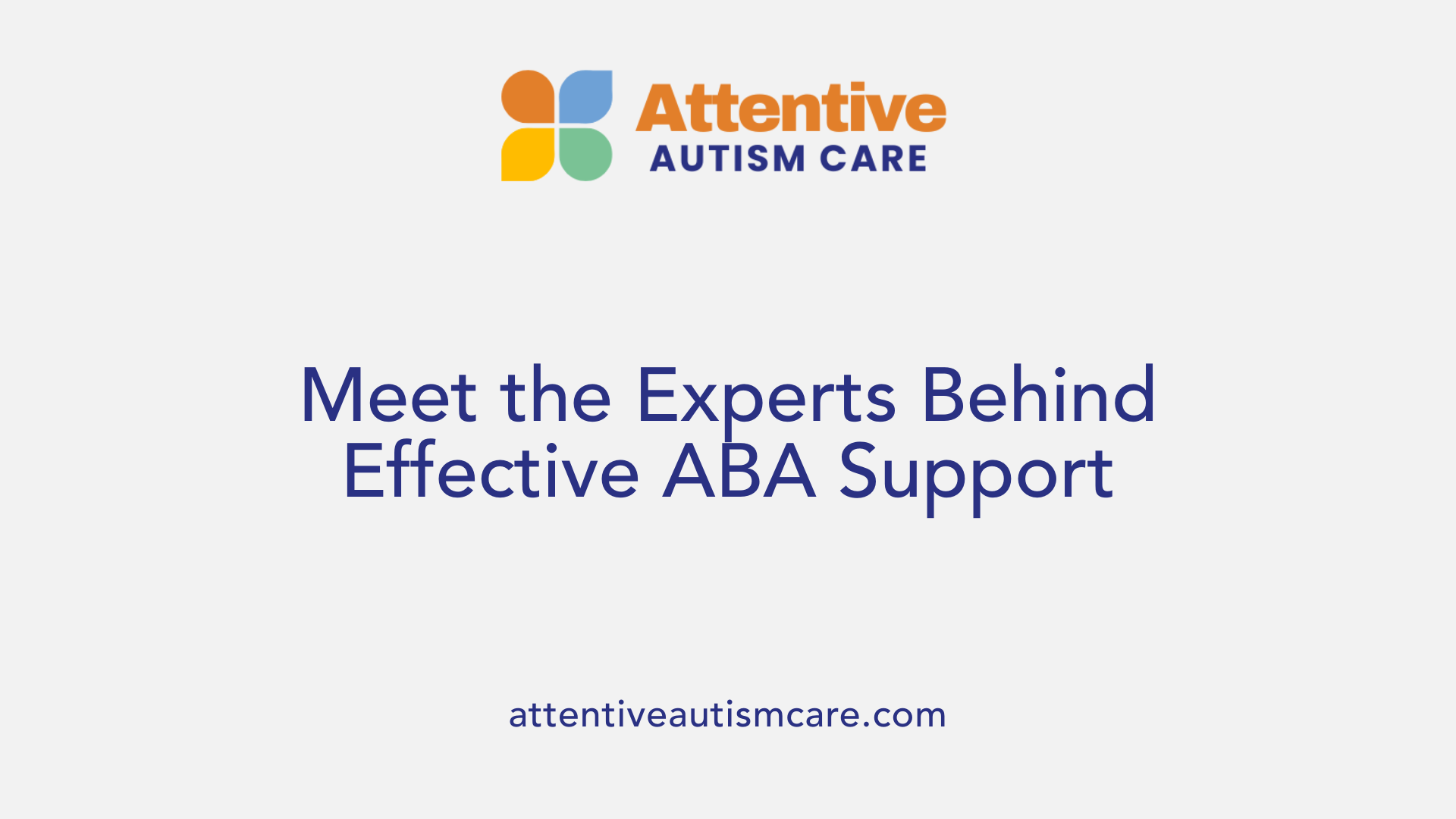
Who typically provides ABA therapy services?
ABA therapy services are delivered by a team of trained professionals specialized in applied behavior analysis. The primary roles include Board Certified Behavior Analysts (BCBAs), Board Certified Assistant Behavior Analysts (BCaBAs), and Registered Behavior Technicians (RBTs).
Roles of BCBAs, BCaBAs, and RBTs
BCBAs hold advanced degrees and are responsible for designing, overseeing, and evaluating individualized treatment programs. They conduct detailed assessments to understand each person's unique needs and plan goals accordingly, such as improving communication and social skills. BCaBAs support BCBAs by assisting in supervision and helping with program implementation. Meanwhile, RBTs are frontline providers who work directly with individuals during therapy sessions, implementing treatment plans and collecting important progress data under the supervision of BCBAs or BCaBAs.
Collaboration and supervision
The ABA therapy team functions best through close collaboration and consistent supervision. BCBAs guide both BCaBAs and RBTs, ensuring that interventions are carried out correctly and adapted as the individual progresses. This cooperative approach helps maintain the quality and effectiveness of services, fostering an environment where the individual’s needs remain the focus.
Settings of ABA delivery
ABA therapy is adaptable and can be delivered across diverse settings to maximize comfort and real-life application. Common environments include clinics, schools, homes, and community spaces. Whether one-on-one or in groups, these settings allow professionals to create naturalistic learning experiences tailored to the individual and their daily life.
The teamwork among these professionals ensures ABA therapy remains a flexible, personalized intervention, aimed at encouraging positive behaviors and improving overall quality of life.
Essential Qualifications and Skills for ABA Practitioners

What qualifications should professionals offering ABA therapy have?
Professionals delivering Applied Behavior Analysis (ABA) therapy need a solid educational foundation, typically starting with a bachelor's degree in psychology, education, or a related field. However, many ABA positions require advanced training, usually a master's degree in applied behavior analysis or a closely related discipline.
Certification through the Behavior Analyst Certification Board (BACB) is essential. This includes credentials such as Registered Behavior Technician (RBT), Board Certified Assistant Behavior Analyst (BCaBA), or Board Certified Behavior Analyst (BCBA). Obtaining these certifications involves specialized coursework, completing supervised practical experience ranging from 1,500 to 2,000 hours, and passing rigorous certification exams.
Licensing regulations vary by state but usually entail verification of education, certification, and supervised fieldwork to ensure standardized professional competence.
What skills are important for ABA practitioners?
Beyond educational and certification requirements, effective ABA practitioners must demonstrate key interpersonal and technical skills:
- Patience and empathy: To work sensitively with individuals who may show challenging behaviors.
- Strong communication: For clear interaction with clients, families, and interdisciplinary teams.
- Data analysis and critical thinking: To assess behaviors accurately and develop effective intervention plans.
How do ABA professionals maintain quality in their practice?
Ongoing professional development is critical for maintaining current knowledge and improving therapeutic approaches. ABA practitioners must also adhere to strict ethical standards set by their certifying bodies to safeguard client welfare and promote best practices.
This comprehensive blend of education, supervised experience, and continuous learning equips ABA professionals to deliver personalized, effective behavioral support tailored to each individual's needs.
Recognizing and Addressing Anxiety in Social Skills Development
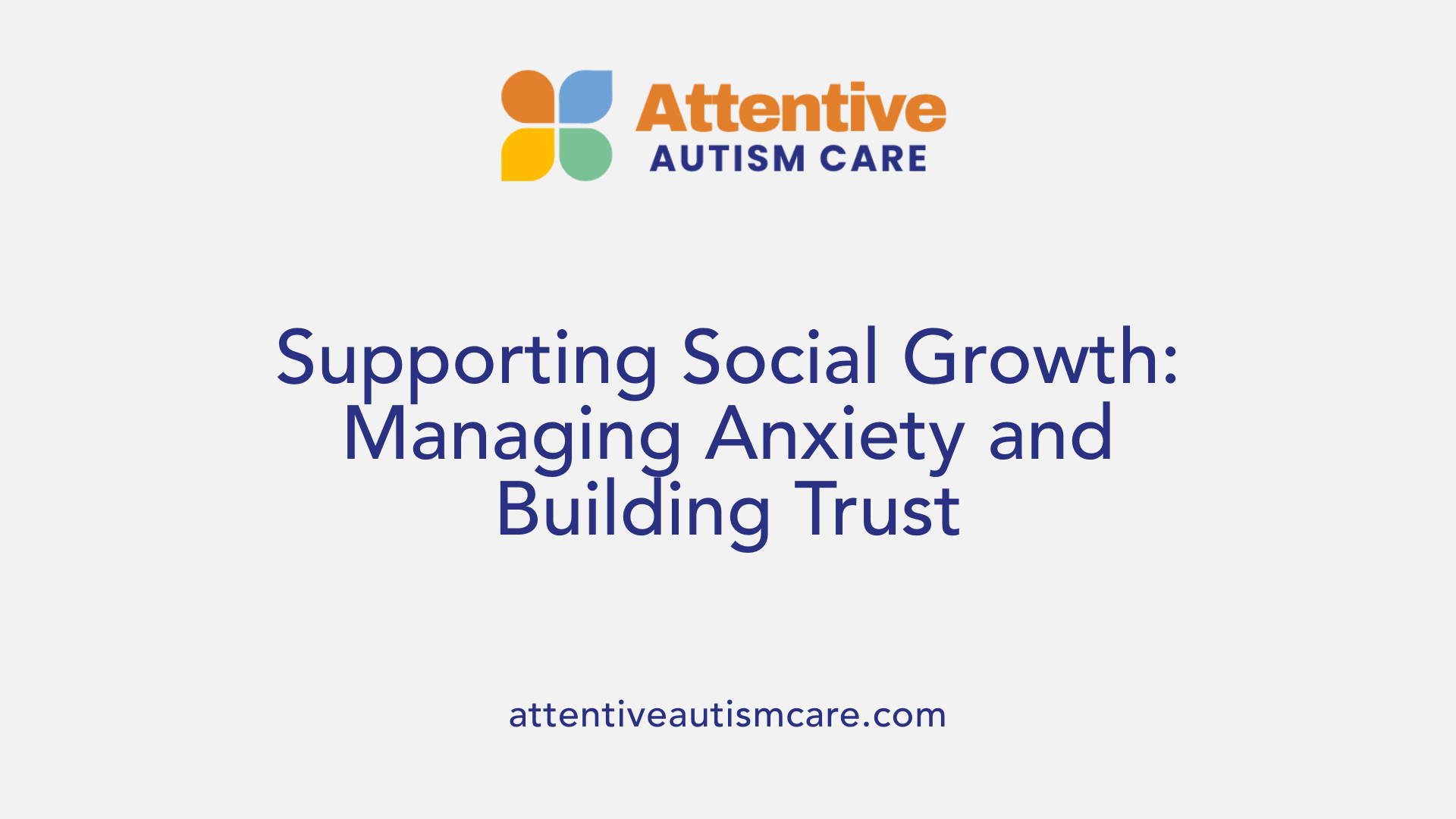
How Does Anxiety Influence Social Behavior in Individuals with PDA?
Anxiety plays a central role in shaping the social behaviors of individuals with Pathological Demand Avoidance (PDA), a profile within the autism spectrum. Demand avoidance behaviors such as refusal, distraction, or even aggression often stem from an intense desire to manage overwhelming feelings of anxiety and maintain control over their environment. This anxiety can lead to significant challenges in forming and maintaining social relationships, as individuals may appear to use surface social skills to mask their discomfort or evade demands.
What Strategies Help Reduce Anxiety-Related Avoidance?
Supportive approaches focus on minimizing anxiety-driven behaviors by adopting compassionate and flexible techniques. Avoiding direct demands and demand-related language helps reduce pressure and resistance. Instead, using indirect communication, providing choices, and maintaining a calm tone can encourage cooperation. Positive reinforcement tailored to the individual's preferences also promotes engagement without prompting stress.
Why Is Building Trust and Predictability Important?
Establishing trust through consistent yet adaptable routines creates a safe space where individuals with PDA feel understood and less overwhelmed. Trust can be fostered by depersonalizing requests, avoiding punitive responses to avoidance behaviors, and offering indirect praise. Such predictability reduces emotional distress and supports gradual improvements in social interactions.
Through these strategies, educators, caregivers, and therapists can better support people with PDA as they develop meaningful social skills while managing anxiety effectively.
Strategies Beyond Therapy: Creating Supportive Environments for Peer Interaction
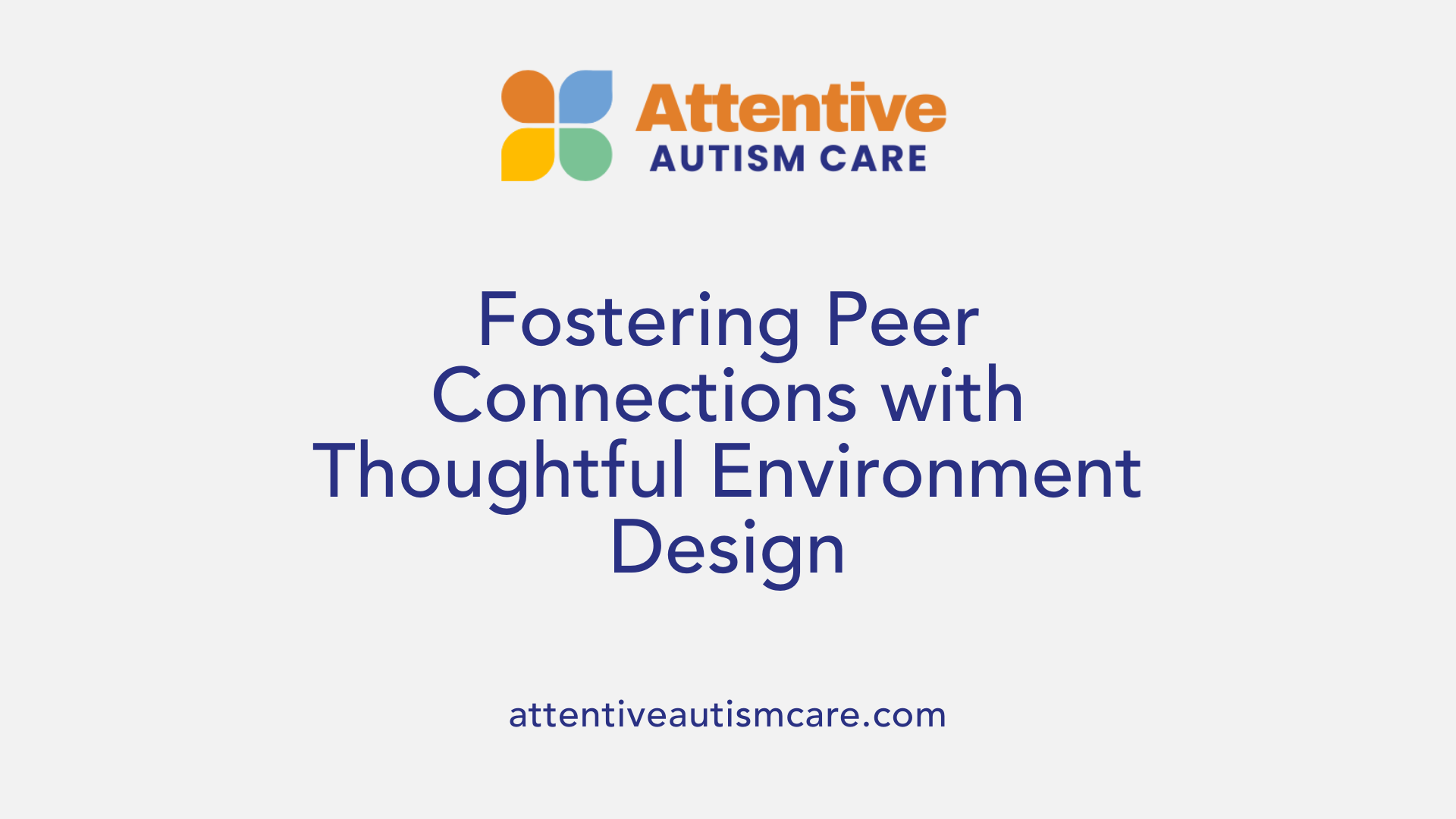
Avoiding Demand Language
For individuals with PDA, the use of direct demands can trigger resistance and anxiety, hindering positive social interactions. To support peer engagement, it is essential to avoid demand-heavy language. Instead, phrasing requests indirectly or offering choices can empower individuals and reduce feelings of pressure. For example, rather than saying, "You must join the group now," one might say, "Would you like to join us when you feel ready?" This approach helps maintain a collaborative atmosphere.
Calm and Consistent Communication
Maintaining calm and steady communication plays a vital role in creating a supportive environment. People with PDA often respond better when communication is delivered in a relaxed tone without emotional charge. Consistency in messaging helps establish trust, while flexibility allows caregivers and peers to adjust to the individual's needs without causing further stress. Depersonalizing requests—focusing on the situation rather than the person—can prevent feelings of confrontation.
Indirect Praise and Flexibility
Offering praise indirectly supports motivation without making individuals feel scrutinized or under pressure. For instance, highlighting achievements within group activities or casually mentioning positive behaviors can encourage continued participation. Flexibility is equally important; allowing individuals to engage at their own pace and adjusting social expectations fosters a sense of safety and autonomy. Combining indirect encouragement with adaptability nurtures confidence in social settings.
These strategies work together to create environments where individuals with PDA feel respected and understood, promoting enriching peer interactions. Emphasizing trust, gentle guidance, and individualized support helps overcome barriers related to demand avoidance and encourages social growth.
The Importance of Family and Caregiver Involvement in Social Skills Support

Training and involvement of caregivers
Family members and caregivers of individuals with PDA and autism play a crucial role in social skills development. Training caregivers in understanding demand avoidance behaviors and effective support strategies equips them to respond with empathy and consistency. Learning to avoid direct demands and using indirect praise helps reduce anxiety and resistance, making social interactions more manageable.
Supporting generalization of skills
Caregivers facilitate the application of learned social skills beyond therapy sessions into everyday life. By practicing communication, turn-taking, and social cues at home or in community settings, skills gained through ABA or other interventions become more meaningful and stable. Encouraging social interactions in familiar environments enhances confidence and reduces social distress.
Building collaborative relationships
Open collaboration between families, therapists, educators, and other professionals ensures cohesive support tailored to the individual's unique needs. Sharing insights about behaviors and effective approaches fosters trust and consistency, improving outcomes. Collaborative relationships promote a supportive network that helps individuals with PDA or autism navigate social challenges more successfully.
Navigating the Debate and Research Surrounding PDA Diagnosis and Support
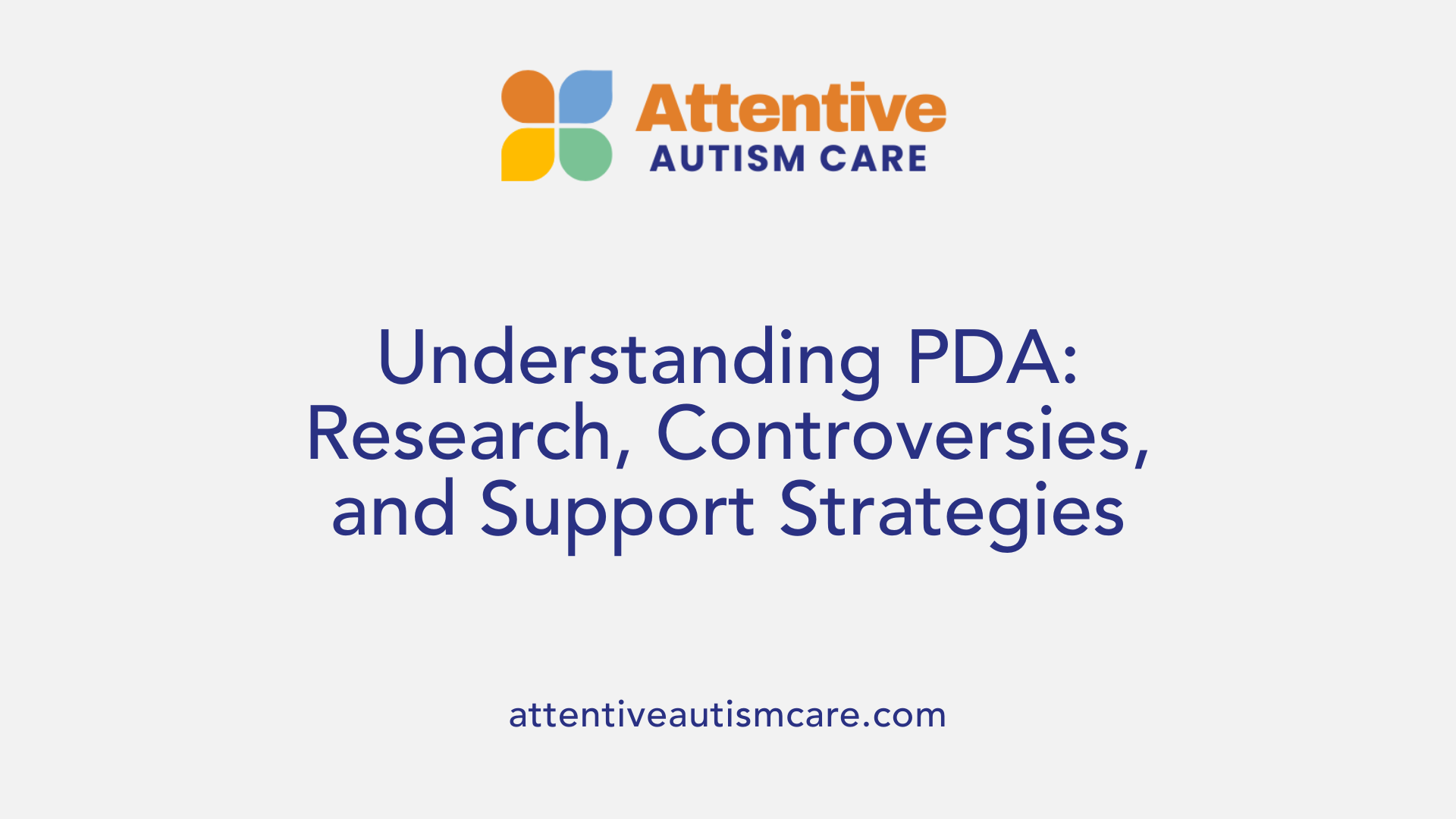
Controversies around PDA as a diagnosis
Pathological Demand Avoidance (PDA) is a profile within the autism spectrum characterized by extreme resistance to everyday demands, a need to control situations, and surface-level social communication. Since its introduction by Elizabeth Newson in 1983, PDA has generated debate within clinical and research communities. Critics question whether PDA should be classified as a distinct diagnosis or merely a behavioral variation within autism and other related conditions. This uncertainty stems from limited research and differing interpretations of PDA traits.
Overlap with autism traits
PDA shares many characteristics with autism spectrum disorders, such as social difficulties and anxiety-driven behaviors. Organizations like The PDA Society and the National Autistic Society classify PDA as an autism profile rather than a standalone diagnosis. Many individuals diagnosed with autism exhibit demand-avoidant behaviors, including distraction, refusal, or emotional withdrawal, which can complicate clear diagnostic boundaries. These overlapping traits suggest that PDA may represent a specific behavioral presentation within the broader autism spectrum.
Implications for individualized support
Given the controversies and overlap, support for individuals with PDA must be tailored and empathetic. Recognizing that demand avoidance stems from anxiety and a need for control is vital to effective intervention. Support strategies emphasize building trust, avoiding direct demands, maintaining calm interactions, and using indirect praise. Whether or not PDA is considered a distinct diagnosis, personalized approaches focused on the individual's unique needs, preferences, and challenges are essential to improving their social relationships, educational engagement, and emotional wellbeing.
Long-term Benefits of Intensive ABA Programs for Autism

How Does Intensive ABA Impact Intellectual and Language Skills?
Applied Behavior Analysis (ABA) therapy is designed to enhance core areas of development in individuals with autism, particularly focusing on intellectual functioning and language abilities. Intensive ABA programs, typically involving 25 to 40 hours of therapy per week over one to three years, have been shown to significantly boost language acquisition and cognitive skills. By using techniques like positive reinforcement, ABA encourages the learning and use of effective communication methods, facilitating stronger verbal and non-verbal expression.
In What Ways Does ABA Enhance Daily Living and Social Skills?
Beyond language and intellectual growth, ABA therapy targets practical daily living skills and social interactions. Its customized programs teach vital self-care routines, play skills, and appropriate social behaviors. Emphasis on enjoyable, naturalistic learning opportunities helps individuals practice these skills in real-life settings such as home, school, or community environments. This comprehensive approach supports increased independence and better social integration.
Are the Outcomes of High-Intensity ABA Programs Sustained Over Time?
Evidence indicates that sustained, high-intensity ABA programs lead to lasting positive outcomes. Consistent therapy over extended periods helps maintain improvements in cognitive functioning, communication, and adaptive skills. The structured monitoring and flexible adaptation of ABA plans ensure that progress is tracked and challenges addressed promptly, maximizing long-term benefits. This enduring support is crucial for enhancing quality of life and promoting lifelong learning and growth.
Accessing ABA Therapy Services: Practical Steps for Families
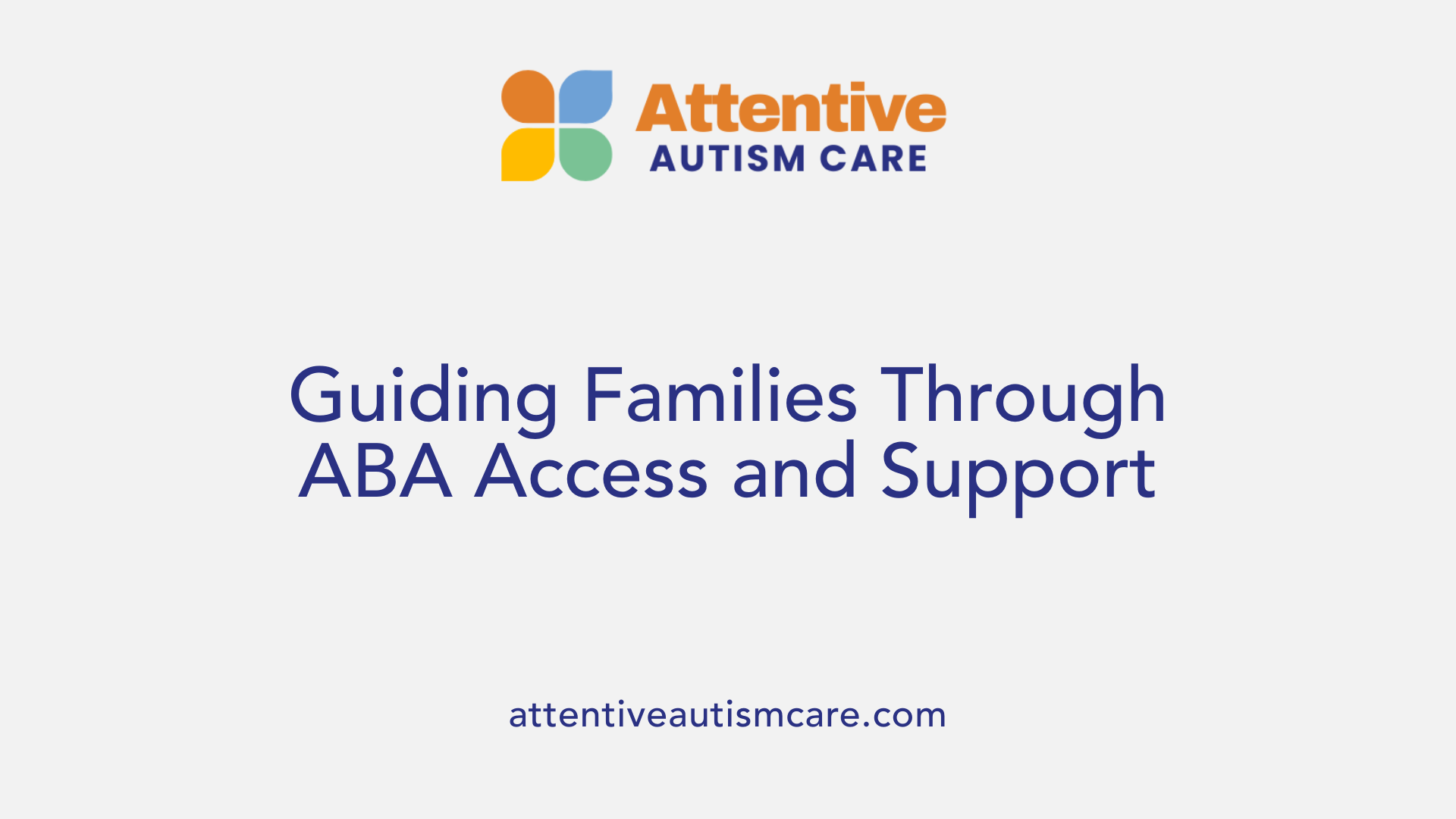
How to Navigate Insurance Coverage for ABA Therapy
Accessing ABA therapy can be financially challenging, but many families find support through private insurance or Medicaid. Both often cover ABA services when these are deemed medically necessary. It's crucial for families to verify their insurance plans beforehand to understand what ABA services are included and any limitations that might apply.
Understanding Medical Necessity Criteria
For ABA therapy to be covered, healthcare providers and insurers typically require a demonstration of medical necessity. This involves a professional assessment indicating that ABA is essential to address specific behavioral challenges, improve communication and social skills, and enhance daily functioning for the individual. Detailed documentation and treatment plans often support this process.
Collaborating with Healthcare Providers
Families should begin by consulting with a trusted healthcare provider experienced in autism spectrum disorders. These professionals can conduct comprehensive evaluations, recommend ABA therapy as part of a personalized intervention plan, and assist with referrals to Board Certified Behavior Analysts (BCBAs). Proactive communication with healthcare providers can ease the path to obtaining necessary authorizations and ongoing support.
By combining a clear understanding of insurance coverage, fulfilling medical necessity requirements, and maintaining strong partnerships with healthcare providers, families can effectively access ABA therapy tailored to support their loved ones' unique needs.
Integrating Social Skills Support Within Education and Community Settings

How Is ABA Implemented in Schools and Communities?
Applied Behavior Analysis (ABA) therapy is well-suited to school and community settings because of its adaptable approach. Programs can be customized to meet individual needs and delivered in one-on-one or group formats. Teachers, therapists, and caregivers collaborate to integrate ABA techniques into daily routines, such as classroom activities and community interactions, making the learning process more natural and effective.
What Are the Benefits of Group Therapy Sessions?
Group therapy within ABA offers unique social advantages. Participants practice communication and social skills with peers, which helps build friendships and social confidence. Group settings simulate natural social environments, allowing individuals to learn cooperation, turn-taking, and empathy in real-time. This peer interaction is essential for developing meaningful social relationships outside therapeutic contexts.
How Does Learning in Natural Environments Help?
Natural environment teaching is a core ABA strategy where skills are taught during everyday activities rather than in artificial settings. For example, lessons on communication might occur during playground time or community outings. This approach increases the relevance of learning, improves generalization of skills to real life, and often reduces anxiety associated with structured sessions, especially for individuals with profiles like PDA who may struggle with demands.
Together, these ABA practices foster social skill development that is meaningful, enjoyable, and directly applicable, supporting inclusion at school and in the community.
Building Bridges: Fostering Lasting Peer Relationships in Autistic Teens
Supporting autistic teens in building peer relationships requires a multifaceted, individualized approach grounded in understanding unique profiles like PDA, employing evidence-based therapies such as ABA, and cultivating supportive environments at home, school, and in the community. Effective ABA programs, tailored to each teen's strengths and challenges, promote social communication skills and reduce behaviors that hinder connections. Qualified professionals, informed caregivers, and inclusive social settings play pivotal roles in this journey. Although debates persist around some profiles within autism, the focus remains on empowering teens to navigate social worlds with confidence and resilience. By integrating therapy, education, and family involvement, society can build bridges for autistic teens to forge meaningful, lasting peer relationships.
References
- Pathological Demand Avoidance (PDA) and Autism
- Applied Behavior Analysis (ABA)
- Applied Behavior Analysis (ABA)
- 6 Benefits of ABA Therapy for Children with Autism
- Applied Behavior Analysis (ABA)
- Applied Behavior Analysis (ABA)
- Behavior Analysts Provider Directory - VirginiaABA
- Who can provide ABA therapy?



































































































